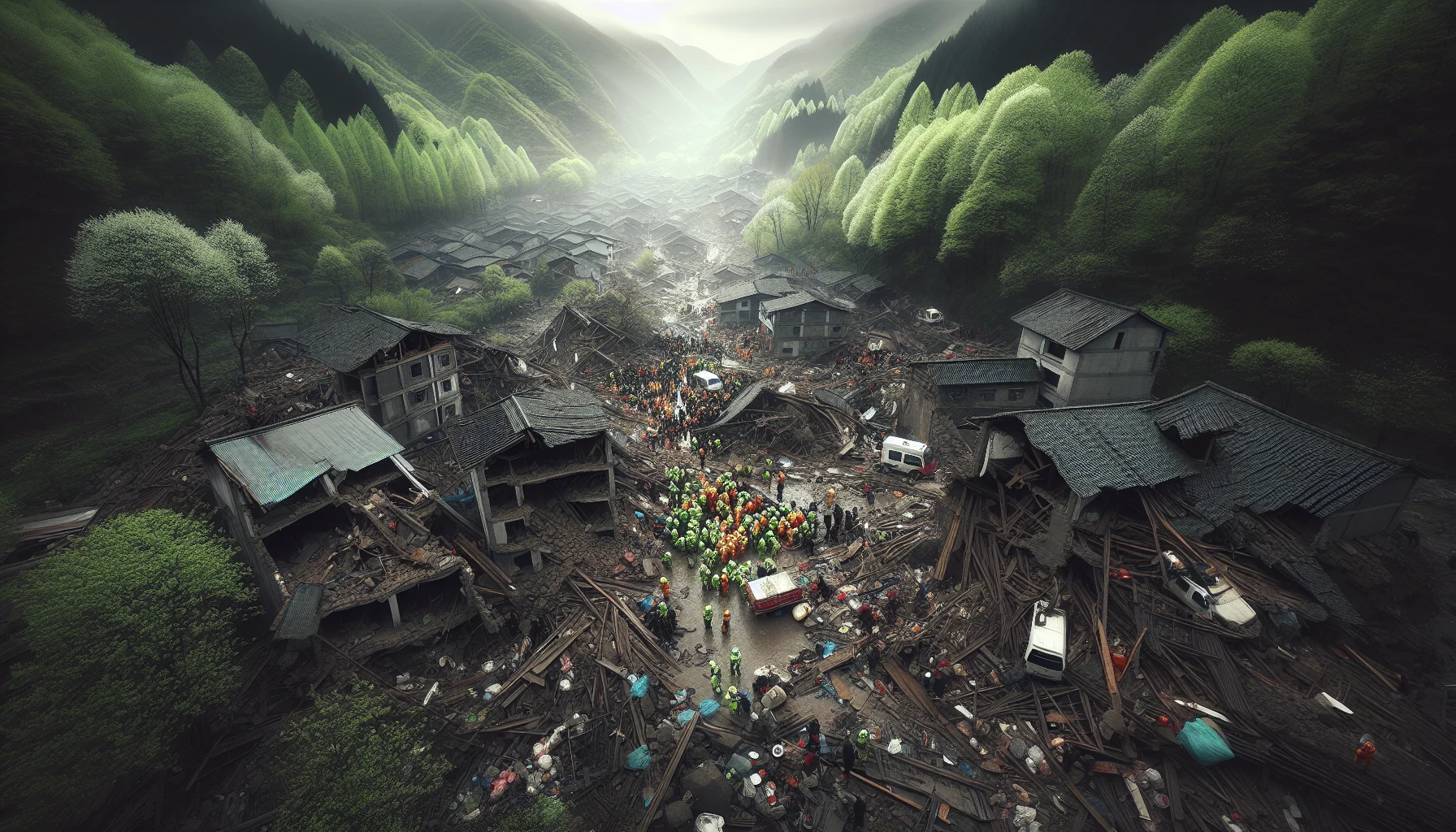
The 2008 Sichuan Earthquake
by: The Calamity Calendar Team
May 12, 2008
A Seismic Shift
The earth trembled in Sichuan Province, China, on a spring afternoon, May 12, 2008. The clock had just struck 2:28 PM, and what appeared to be an ordinary day was about to become a tragedy etched permanently into the collective memory of a nation. The town of Wenchuan, nestled among steep mountains in northwestern Sichuan, found itself at the epicenter of a natural disaster that would profoundly upset lives and landscapes alike.
Humanity's relationship with the earth is uneasily balanced, particularly in regions marked by tectonic volatility like Sichuan. Far beneath the ground, the Indo-Australian and Eurasian plates pressed relentlessly against each other, buckling and snapping in ways only the earth could understand. On this day, that tension released with catastrophic force, sending shockwaves rippling outward.
In the Shadow of the Mountains
Sichuan, a province known for its scenic beauty and cultural heritage, was also a region vulnerable to the whims of nature. Years of relatively minor seismic activity had left the residents accustomed to the occasional tremor, a reluctant part of life amid the rumbling highlands. However, this particular day would be different; the magnitude 7.9 earthquake would soon underscore the fault lines not only under the ground but also in the fabric of human preparation.
Before the quake, many of the structures dotting the countryside—homes, schools, and hospitals—were built without the seismic resilience necessary to withstand such a force. Regulations existed, but enforcement varied, and corners cut in the realm of safety now bore deadly consequences.
The Earthquake: Wrenching Metal and Stone
At the moment the Wenchuan Earthquake struck, the region's character swiftly morphed from vibrant to chaotic. Buildings once standing as monuments to human endeavor crumbled in seconds, the earth swallowing whole neighborhoods in the blink of an eye. Screams mixed with the sound of splintering wood and cracking masonry as hillsides gave way in landslides, the destruction carrying with it lives and livelihoods.
In the immediate aftermath, silence held a suffocating grip—only to be broken by the cries of survivors and the rumble of further aftershocks challenging the fragile remnants of stability. Light and hope were trapped in darkness beneath the debris. Many survivors, in their desperate search for loved ones, found their voices hoarse with dust and grief.
Thanks for subscribing!
Picking Up the Pieces
In the hours and days that followed, a massive mobilization effort unfolded. The Chinese government dispatched more than 130,000 soldiers and police officers to aid in the rescue and relief operations. The military surged through the debris-strewn roads, cutting paths with determined urgency to reach isolated communities buried under landslides.
International aid swiftly followed, the world responding to the images of devastation. Humanitarian organizations from across the globe offered support—in the form of manpower, relief supplies, and expertise—fostering a rare moment of unity in adversity.
Yet, despite the heroic efforts, the toll of the quake was ghastly. The official numbers told part of the story—over 87,000 lives lost, nearly 375,000 injured, and about 18,000 untraceable souls leaving empty chairs and unanswered questions. The economic impact soared to approximately $150 billion USD, a staggering figure underlining the physical and emotional reconstruction required.
The Path to Recovery
The scars were not only physical; they were as much in the soul of the survivors. The immediate strategy involved not only finding the living amongst the ruins but also tending to the living who had lost everything. Medical care, shelter, food, and a sense of safety became priorities amid the chaos.
In time, as stability took tentative root, attention turned to what could be salvaged and what had to be built anew in a future defined by resilience. Authorities vowed a stricter enforcement of building codes, investing in structures meant to withstand the next whim of nature.
Institutions arose dedicated to improving early warning systems, precisely tuning the scientific understanding of earthquakes in a bid to mitigate future casualties. Educational campaigns slowly seeped into public consciousness, guiding communities on preparedness.
Aftershocks and Understanding
Time heals, albeit slowly, binding the collective wounds of Sichuan. The lessons from May 12, 2008, continue to influence policy and infrastructure, an intricate dance between human aspiration and nature's grandeur. Technological advances have refined seismic monitoring, hoping to offer a whisper of warning before the earth again moves in anger.
Amid the rubble and the heartache, stories of survival and resilience emerge, reminders of the human spirit that refuses to yield. Today, the landscape of Sichuan stands altered—some changes physical, others profound and unseen, in the hearts of those who endured.
Even as thousands gather annually to commemorate the lives lost on that fateful day, the narrative is no longer only one of loss. It includes a fierce determination to safeguard the living, a resilience that rises as steadfastly as the Sichuan mountains against any future shock—an indelible legacy of a day where the earth reminded us of its power, and we, of our tenacity.
Stay in the Loop!
Become a Calamity Insider and get exclusive Calamity Calendar updates delivered straight to your inbox.
Thanks! You're now subscribed.